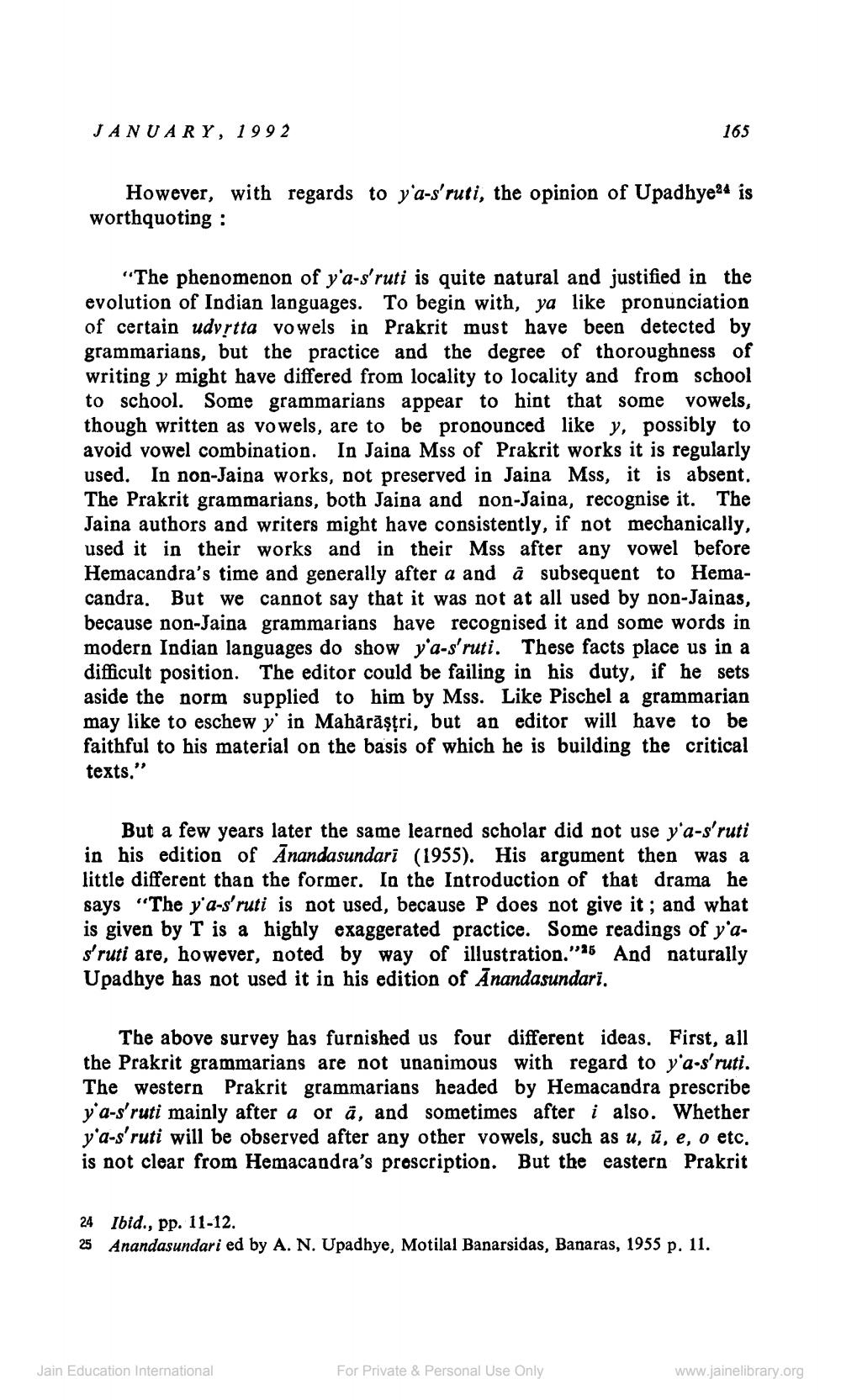________________
JANUARY, 1992
However, with regards to y'a-s'ruti, the opinion of Upadhye24 is worthquoting:
"The phenomenon of y'a-s'ruti is quite natural and justified in the evolution of Indian languages. To begin with, ya like pronunciation of certain udvṛtta vowels in Prakrit must have been detected by grammarians, but the practice and the degree of thoroughness of writing y might have differed from locality to locality and from school to school. Some grammarians appear to hint that some vowels, though written as vowels, are to be pronounced like y, possibly to avoid vowel combination. In Jaina Mss of Prakrit works it is regularly used. In non-Jaina works, not preserved in Jaina Mss, it is absent. The Prakrit grammarians, both Jaina and non-Jaina, recognise it. The Jaina authors and writers might have consistently, if not mechanically, used it in their works and in their Mss after any vowel before Hemacandra's time and generally after a and a subsequent to Hemacandra. But we cannot say that it was not at all used by non-Jainas, because non-Jaina grammarians have recognised it and some words in modern Indian languages do show y'a-s'ruti. These facts place us in a difficult position. The editor could be failing in his duty, if he sets aside the norm supplied to him by Mss. Like Pischel a grammarian may like to eschew y' in Mahārāştri, but an editor will have to be faithful to his material on the basis of which he is building the critical texts."
165
But a few years later the same learned scholar did not use y'a-s'ruti in his edition of Anandasundari (1955). His argument then was a little different than the former. In the Introduction of that drama he says "The y'a-s'ruti is not used, because P does not give it; and what is given by T is a highly exaggerated practice. Some readings of y'as'ruti are, however, noted by way of illustration."5 And naturally Upadhye has not used it in his edition of Anandasundari.
The above survey has furnished us four different ideas. First, all the Prakrit grammarians are not unanimous with regard to y'a-s'ruti. The western Prakrit grammarians headed by Hemacandra prescribe y'a-s'ruti mainly after a or a, and sometimes after i also. Whether y'a-s'ruti will be observed after any other vowels, such as u, u, e, o etc. is not clear from Hemacandra's prescription. But the eastern Prakrit
24 Ibid., pp. 11-12.
25 Anandasundari ed by A. N. Upadhye, Motilal Banarsidas, Banaras, 1955 p. 11.
Jain Education International
For Private & Personal Use Only
www.jainelibrary.org




